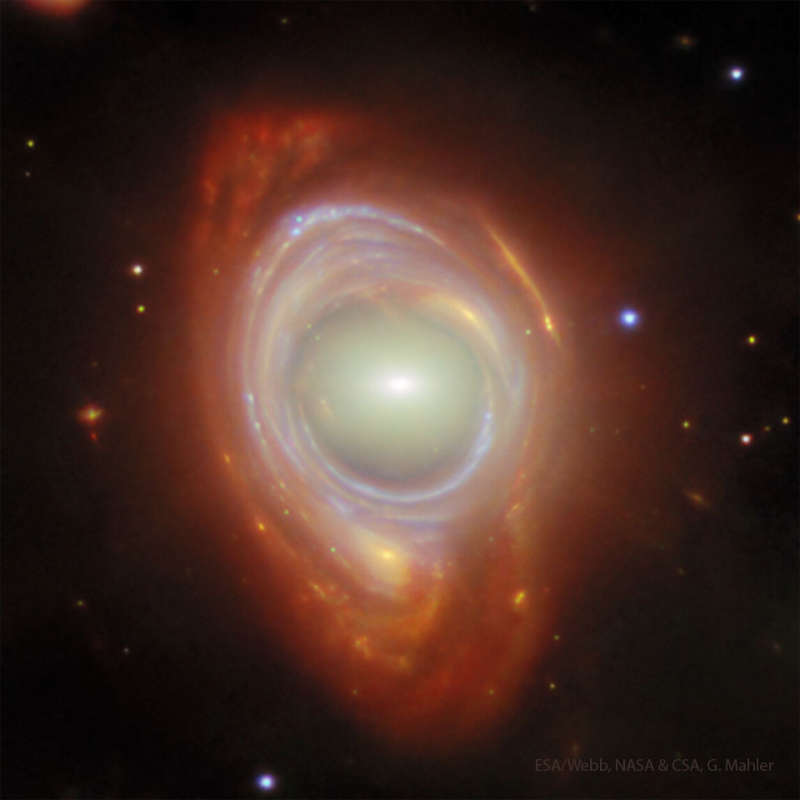APOD: 2025 April 21 Б Galaxy Lenses Galaxy from Webb

Explanation:
Is this one galaxy or two?
Although it looks like one, the answer is two.
One path to this happening is when a small
galaxy
collides with a larger galaxy and
ends up in the center.
But in the featured image, something more rare is going on.
Here, the central light-colored
elliptical galaxy is much closer than the blue and red-colored
spiral galaxy that surrounds it.
This can happen when near and far galaxies are exactly aligned, causing the gravity of the
near galaxy to pull the light from the far galaxy around it in an effect called
gravitational
lensing.
The
featured galaxy double was taken by the
Webb Space Telescope
and shows a complete
Einstein ring, with great detail visible for both galaxies.
Galaxy
lenses like this can reveal
new information about the
mass distribution of the foreground lens and the
light distribution of the background source.
Authors & editors:
Robert Nemiroff
(MTU) &
Jerry Bonnell
(USRA)
NASA Web Site Statements, Warnings,
and Disclaimers
NASA Official: Jay Norris.
Specific
rights apply.
A service of:
LHEA at
NASA /
GSFC
& Michigan Tech. U.

